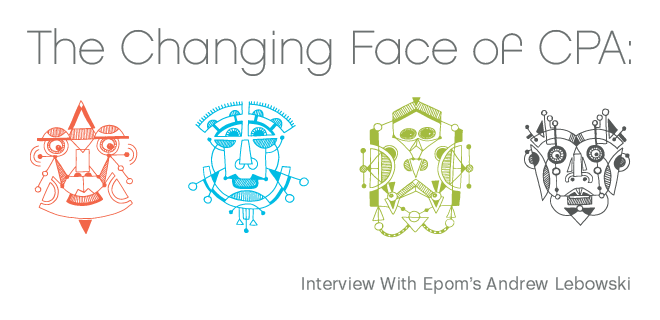
In the past, the acronym CPA had a simple connotation for publishers: low payout. Particularly in the post-bubble digital advertising world, CPA campaigns seemed a desperate alternative when CPMs had hit rock bottom. But more than a decade later, Epom Head of Sales Andrew Lebowski argues that in the age of programmatic and analytics, CPA isn’t yesterday’s “cost per acquisition.”
CPA can be a powerful route for advertisers, particularly ones who look beyond conversions and seek insight into their target audiences. In turn, it’s a healthier revenuefor publishers – particularly when it comes to the desertknown as mobile. I chatted with Lebowski about current CPA business, the mobile opportunity and thwarting bot traffic. We even ventured further down the rabbit hole to debate how networks can stay viable despite being squeezed on all sides.
GD: What do you think CPA means/includes in 2014? How has the practice has evolved?

AL: Our customers, which are mainly CPA networks, are driven by advertisers who pay per exact action only, such as a sale or registration. This is why CPA is still their Holy Grail — a conversion is still the only metric that reflects actual ROI. Reaching CPA goals is difficult, since a successful CPA campaign requires precise targeting, which encourages networks to work on and create solutions that analyze BigData and present it in an understandable and measurable way, which is exactly what Epom is focusing on.
For example, when running a CPA campaign you can give 1,000 impressions to a single advertiser, resulting in, let’s say, five $1 conversions, but a deeper understanding of the target audience allows networks to reveal additional opportunities for other advertisers, increasing conversion rates and revenue for publishers.
GD: Many publishers believe CPA is not a great revenue driver. Why do you think publishers should be more open to CPA deals? What should they know?
AL: First of all, despite the fact that most publishers still prefer CPM, a well targeted CPA campaign can show impressive results when done properly. The goal of most advertisers is to see high conversion rates, because they are easy to measure. As a publisher, simply showing a banner is good, but earnings can be higher if they care more about their advertisers’ conversions. This can be done by using the benefits of big data analysis and smart targeting tools.
GD: How are advertisers typically approaching CPA now? Is there an opportunity many are missing?
AL: The main goal of a typical CPA campaign is direct response. However, a deeper understanding of customers’ lifetime value has made CPA advertisers willing to spend part of their budget on trying to reach consumers on a longer cycle. For example, a noticeable trend is that some CPA campaigns see social interaction, increasing brand awareness, as an acquisition.

GD: How does mobile factor into CPA campaigns?
AL: While brands are not rushing into mobile, we see that the current mobile world is driven by CPA offers coming from mobile content providers, aggregators, and app developers. So, from what we see now, CPA has a huge piece of the pie here. Every advertiser fights for its app to be downloaded, offer to be sold, and all these actions should be tracked and counted which is not an easy thing in the no-cookie mobile world. This drives the development of precise mobile-action-tracking solutions.
GD: Besides conversions, what other analytics most interest your advertisers? What do your network clients look for?
AL: I think they’re trying to master the whole funnel instead of targeting its bottom only. This is paramount to being able to expand the whole media-buying process and thus increase overall ROI. Advertisers and marketers are looking for solutions that will help them scale beyond just their retargeting programs and get a clearer view on the dynamics of all the funnel specifics. That’s why attribution and data transparency will be much bigger themes in the foreseeable future.
GD: What other platform features are you seeing clients increasingly take advantage of?
AL: Any feature that helps with precise targeting and clear, real-time analysis. Advertisers want to know if it was the first or the fifth impression that lead to the conversion, whether the ad was above the fold or below it, was it actually viewed by user or not. Adding these targeting features to DMP’s capabilities presents advertisers with tremendous results, letting them keep high CPMs on publishers’ inventory and getting more conversions.
GD: Fraud and bot traffic have become huge concerns in the programmatic and direct response space – how do you ensure advertisers your results are the real thing?

AL: Bots and falsified impressions lead to a skewed representation of CPA campaigns; accurate statistics are difficult to come by. That’s why we are using our own proprietary solution to ensure that this kind of traffic does not affect our clients. Epom currently filters over 90% of all fake traffic, and is constantly working on being able to identify even more.
GD: Networks have been marginalized in the current environment – how do you see them retaining their relevance and growing? How do networks prove their value to publishers beyond revenue?
AL: Networks should focus on learning their publishers’ inventory: the content of their websites, what placements are available, who the target audience of the website is. This will help advertisers target their campaigns, increase conversions, and, thus, also increase the eCPM for the publishers. Many networks used to follow the well known approach when CPA networks simply fill in a publisher’s inventory which wasn’t filled by CPM networks first.
Epom is trying to reform this trend, giving more analytical and targeting instruments to our customers, encouraging them to rethink this approach. Why not use the publisher’s inventory to serve well-targeted CPA campaigns, and let the rest of the inventory go to CPM networks? It may sound ambitions, but deeper analysis and breakdown of Big Data into day-to-day targeting and optimization can make the global acceptance of CPA campaigns far more likely.